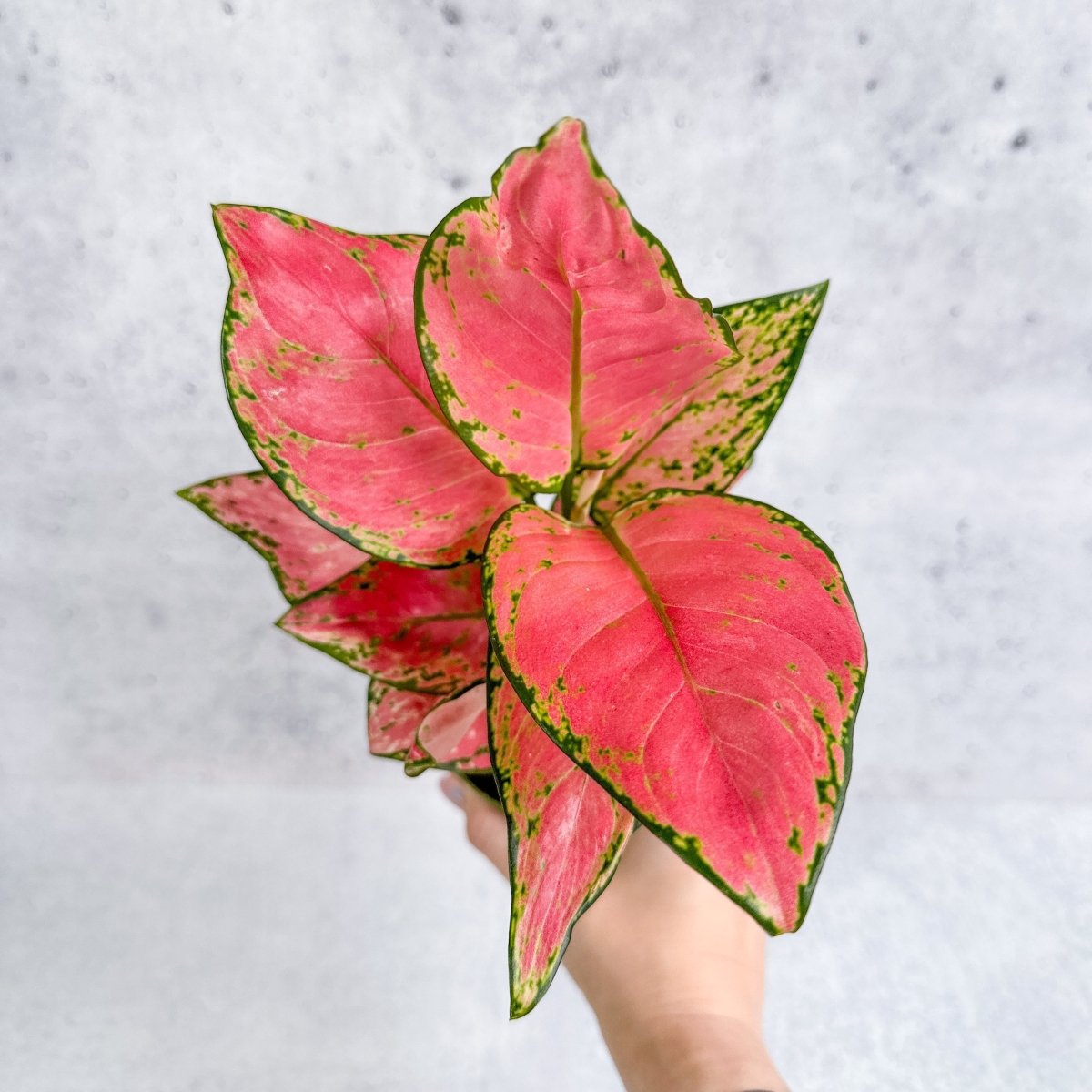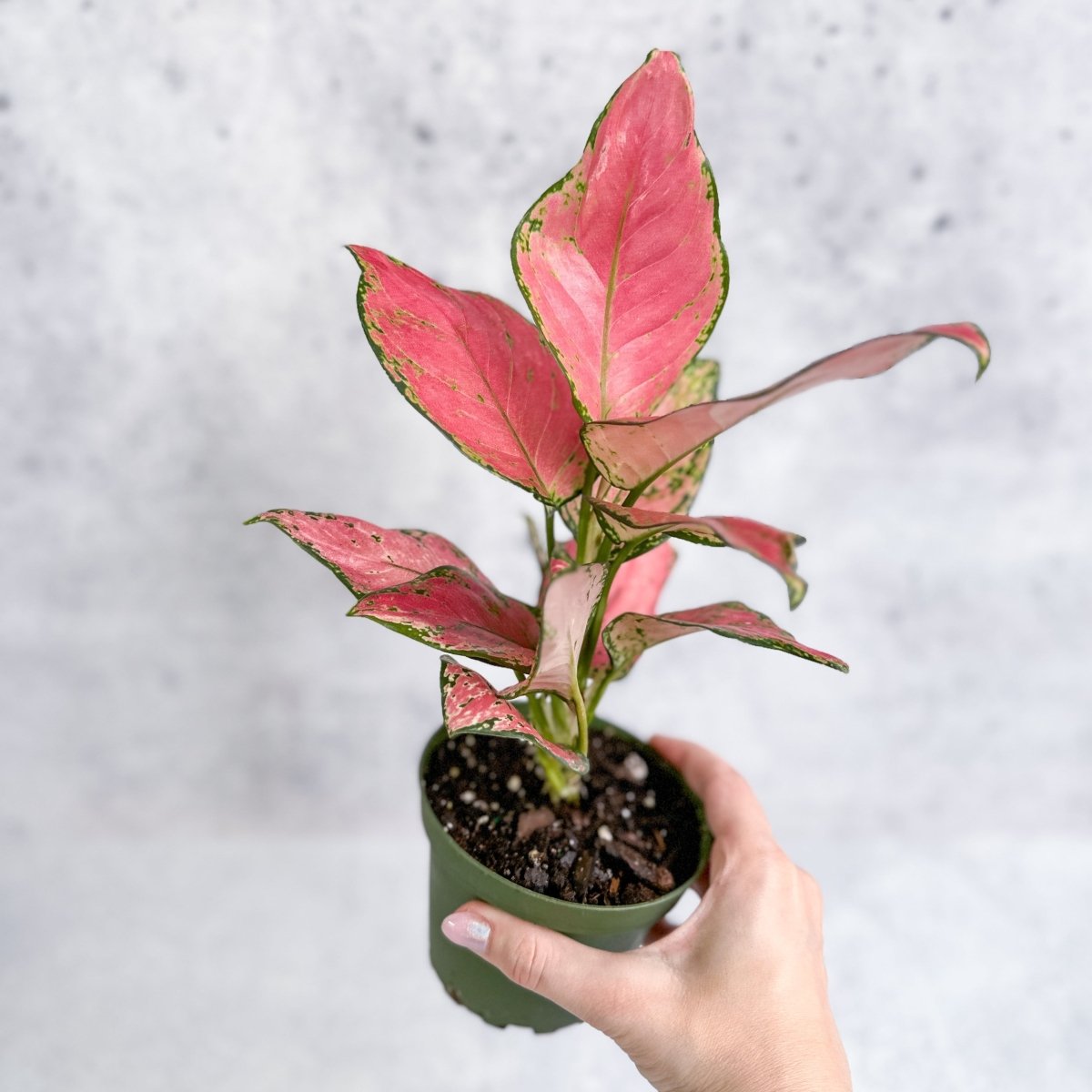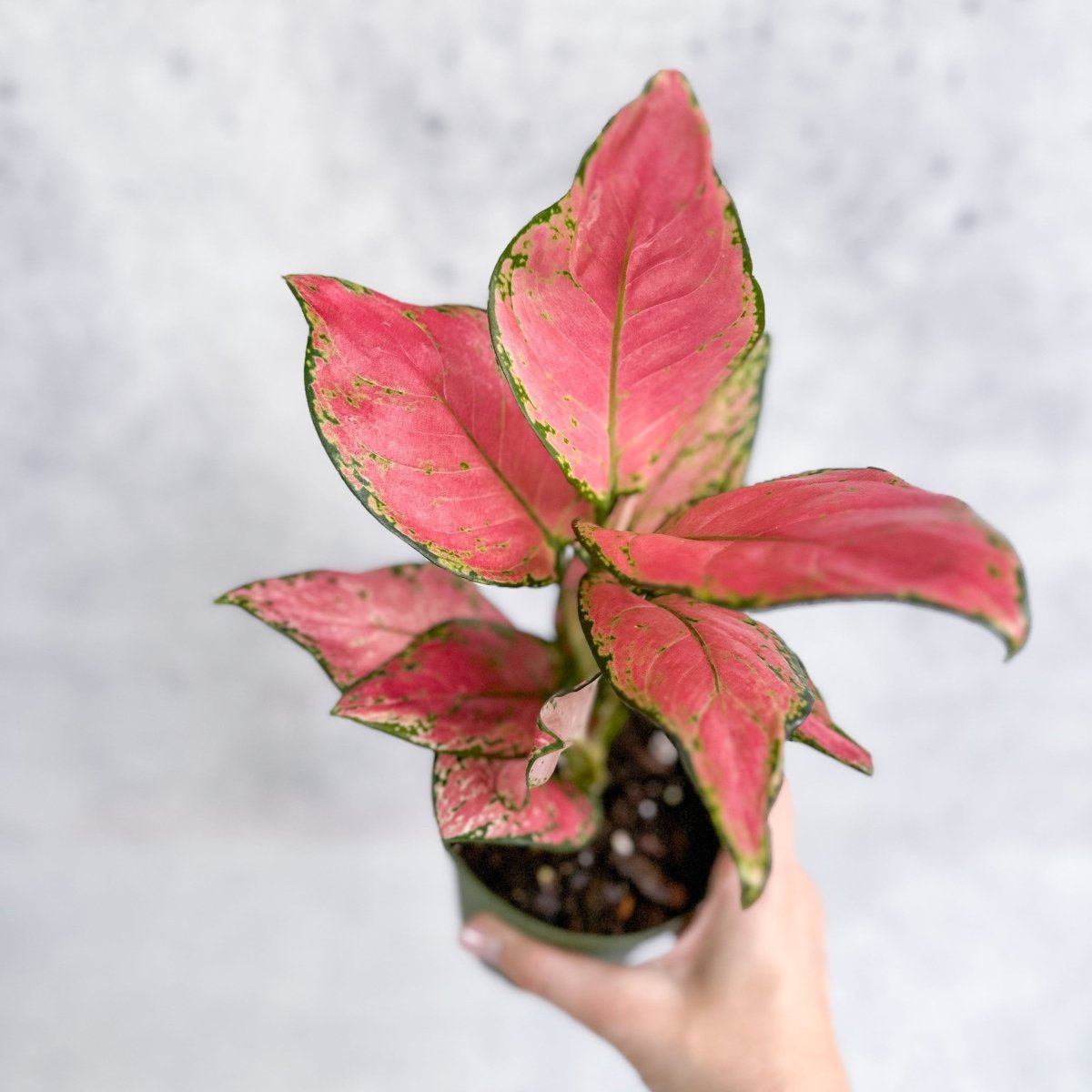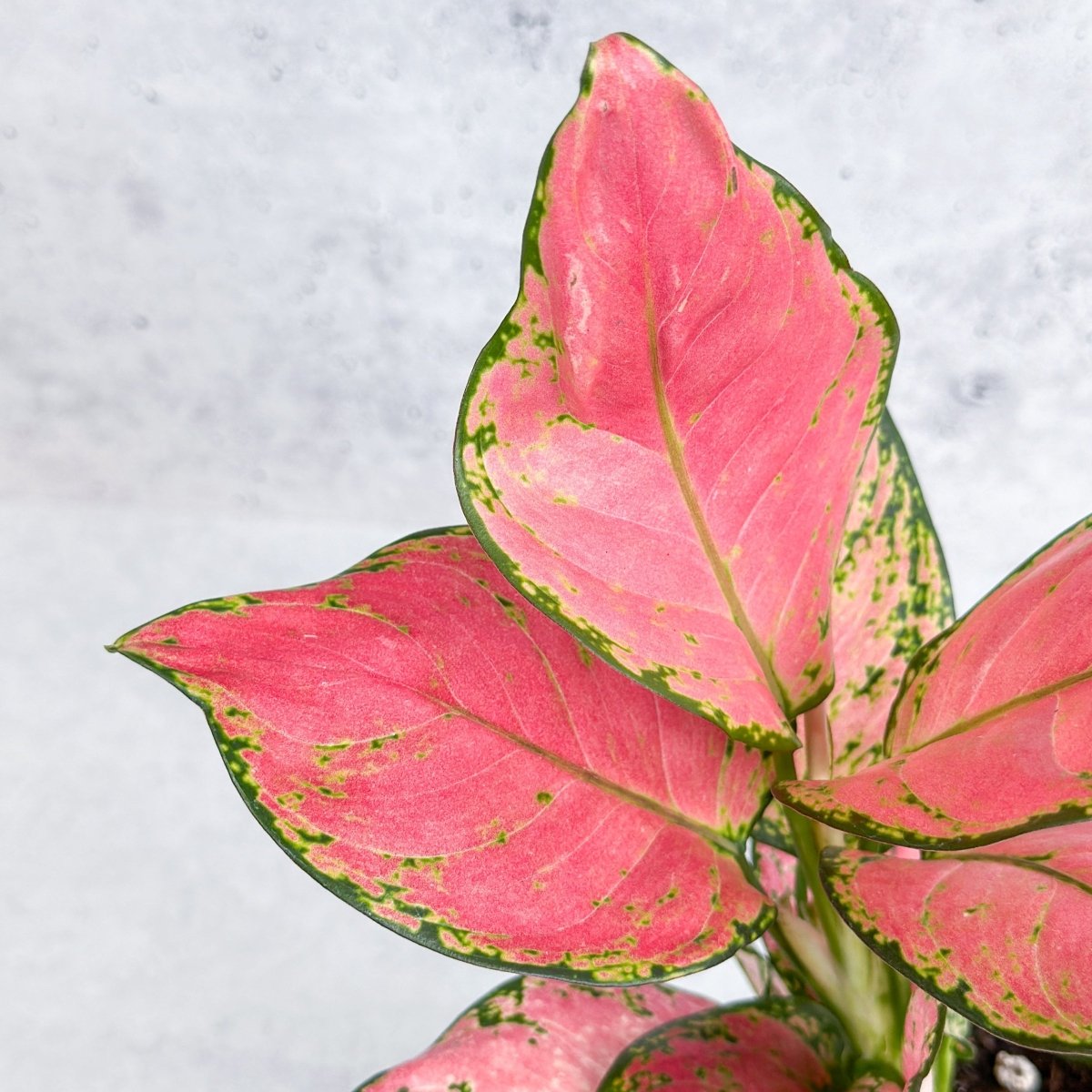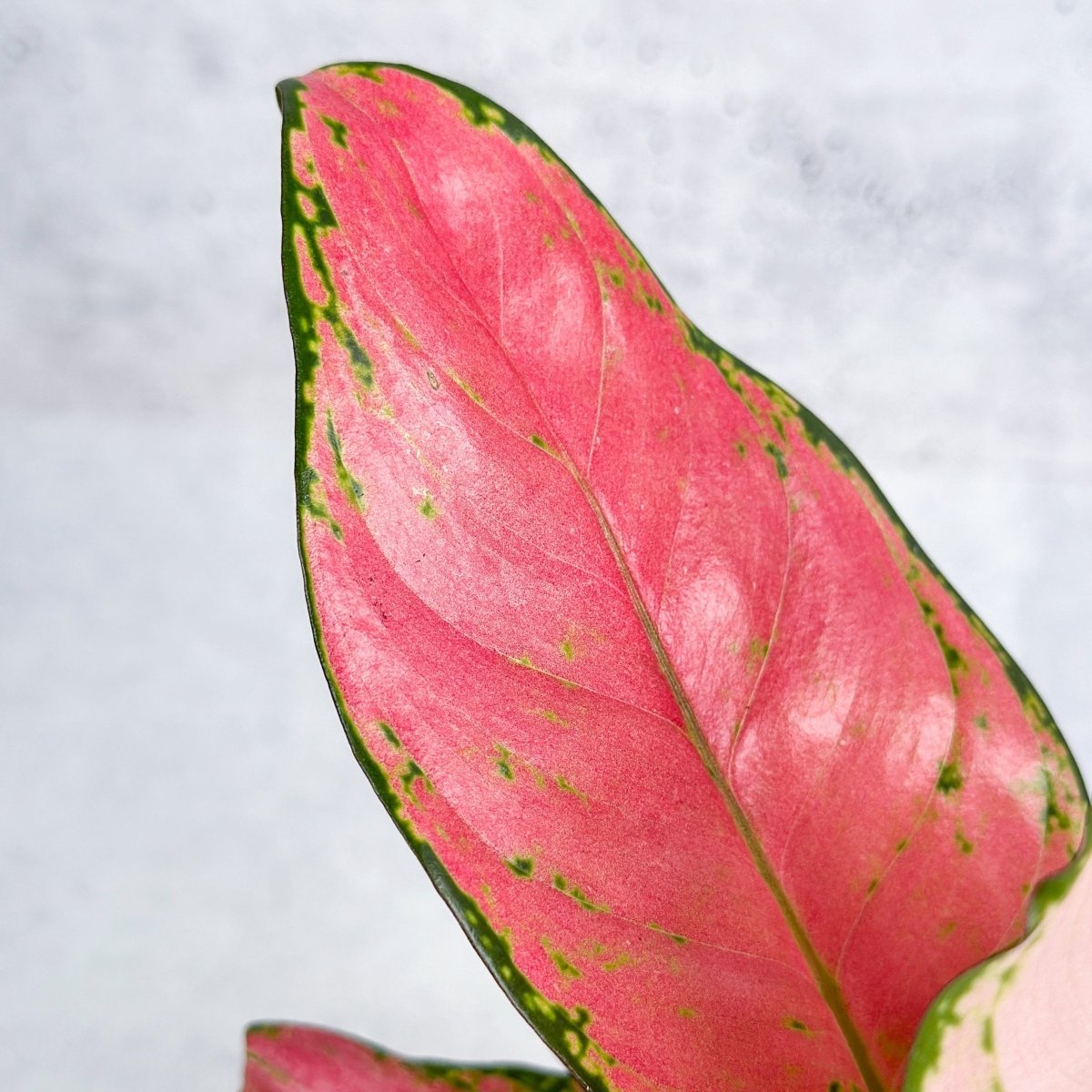Aglaonema Pink Lady Valentine Chinese Evergreen Hybrid - 4 Inch
Aglaonema Pink Lady Valentine Chinese Evergreen Hybrid - 4 Inch - 4" Nursery Pot is backordered and will ship as soon as it is back in stock.
Couldn't load pickup availability
Description
Description
Aglaonema 'Pink Valentine': A Charming Addition
Discover your new favorite houseplant! The Aglaonema 'Pink Valentine' stands out with its vibrant pink and green foliage, offering a splash of color and charm to any indoor space. This plant’s most striking feature is its beautifully variegated leaves, which exhibit shades of pink and deep green that create a lovely contrast. Easy to care for, it thrives in moderate light and requires only occasional watering. Its compact size makes it perfect for desks, shelves, or small plant collections.
Pink Valentine Aglaonema Plant Profile
Botanical Name: Aglaonema 'Pink Valentine'
Common Name: Pink Valentine, Pink Aglaonema
Family: Araceae
Native Range: Southeast Asia
Pink Valentine Aglaonema Care Guide
Care: Easy
Light: Prefers moderate, indirect light. Avoid direct sunlight.
Water: Keep soil consistently moist, but not soggy.
Humidity: Tolerates average humidity.
Temperature: 65-80°F. Avoid cold drafts.
Pruning: Remove any yellow or dead leaves to maintain its appearance.
Feeding: Fertilize monthly during the growing season with a balanced plant food.
Growth: Compact, bushy growth up to 1-2 feet tall.
Propagation: Propagate through stem cuttings or division.
Pests: Watch for common pests like spider mites and aphids.
Toxicity: Toxic to pets and humans if ingested.
Looking For More Care Tips For Your Pink Lady Chinese Evergreen?
Check out our comprehensive Chinese Evergreen Care guide over in our blog section. Explore tips, tricks, and troubleshooting from our staff experts!
Fun Aglaonema 'Pink Valentine' Fact: Pink Variegation Delight
The Pink Valentine Aglaonema is renowned for its eye-catching pink variegation, which can brighten up any room. The pink hues are more pronounced in good light conditions, making this plant not only a beautiful addition to your collection but also a great way to add a pop of color to your home decor.
Historical Aglaonema Highlight: Southeast Asia’s Gem
The Aglaonema 'Pink Valentine' hails from the lush tropical forests of Southeast Asia. Its unique coloration and easy care make it a popular choice among plant enthusiasts. As a cherished member of the Aglaonema family, it brings a touch of exotic beauty to indoor gardens, reflecting the rich diversity of its native region.
Keep Your Plants Cozy with Heat Packs
Frequently Asked Questions
Shipping
How do you ship your plants?
How do you ship your plants?
We carefully package each plant with love by hand right from our shop in Brooklyn. Extra steps are taken to ensure that every leaf arrives in pristine shape by using polyfill and encapsulating the plant in a protective paper sleeve. The soil is also hydrated before shipping so that the plant has plenty of water for it's travel to your doorstep. We offer several shipping speeds, so please choose the one that you feel comfortable with depending on your location.
Will my plant look like the one on the website?
Will my plant look like the one on the website?
Awesome question, we're glad you asked. Given the nature of our plant shop, we're constantly moving plants in and out of the shop, making it difficult and borderline impossible to keep an exact picture of each plant. In addition to the constantly rotating crop, we often grow in batches of 6, 12, or sometimes more! With this quantity we are unable to take a photo of each and every plant. The photos that we attach to each product listing is going to be of a plant that represents the average size and fullness of that set of plants. Some may be slightly larger or smaller, but in general, similar.
Do you include heat packs with your plants?
Do you include heat packs with your plants?
We offer Heat Packs for sale separately from the plants in 40, 60 and 72 hour increments. Please add a heat pack or two to your order if you live in an area where your order may be affected during transit by cold temperatures. We are not responsible for orders that are placed and damage is incurred to the plant if a heat pack is not purchased.
Which heat pack should I choose?
Which heat pack should I choose?
Heat packs come in three different increments, so please choose the appropriate hour increment depending on the speed of shipping that you choose during checkout. For example, if you choose a cheaper shipping option that will take longer, please select the 72 hour heat pack. If you've chosen a shorter method of shipping, the 40 or 60 hour increment would work! We like to encourage our customers to always get more than you need, just to be on the safe side!
How long will it take to receive my order?
How long will it take to receive my order?
Standard shipping normally takes 3-5 days. Next day shipping is available on all domestic orders (for an additional charge). International shipping times depend on the products and destination (estimated at checkout).
Do you offer express shipping?
Do you offer express shipping?
All orders are shipped 5-8 business days from the date it is placed. Please note that as a small plant shop, we do everything in our power to get orders out as fast as we can in the order that they come in. If you have circumstances that require expedited fulfillment, please connect with you and we can potentially offer options.
What countries do you ship to?
What countries do you ship to?
We ship our selection of rare, healthy, and unique houseplants all across the United States including California. At this time, due to customs and agricultural limitations, we are unable to ship plants internationally from the United States.
Returns and Refunds
How do I return a product?
How do I return a product?
Items must be returned within 30 days after receiving your order. Items must be returned in the same condition in which they were received, be unworn/unused, have any tags still attached, and include all the original packaging.
How long will it take to receive my refund?
How long will it take to receive my refund?
Refunds are processed within 7 days from when we receive the item(s).
What should I do if my plant arrives in poor shape?
What should I do if my plant arrives in poor shape?
In the extremely unlikely event that your plant arrives in less than perfect condition, you're covered by our 15-day plant health guarantee. Simply snap a photo of your plant and send it over to us. We'll happily take a peek and offer suggestions on how to perk it back up, offer a store credit, or send a replacement. We like to make it as easy as possible!
Can I return or exchange a plant?
Can I return or exchange a plant?
At this time, we do not accept returns on plants. In extreme circumstances where a return of a plant is necessary, the customer is responsible for the return shipping and a refund will only be issued if the plant arrives back to us in living condition.

